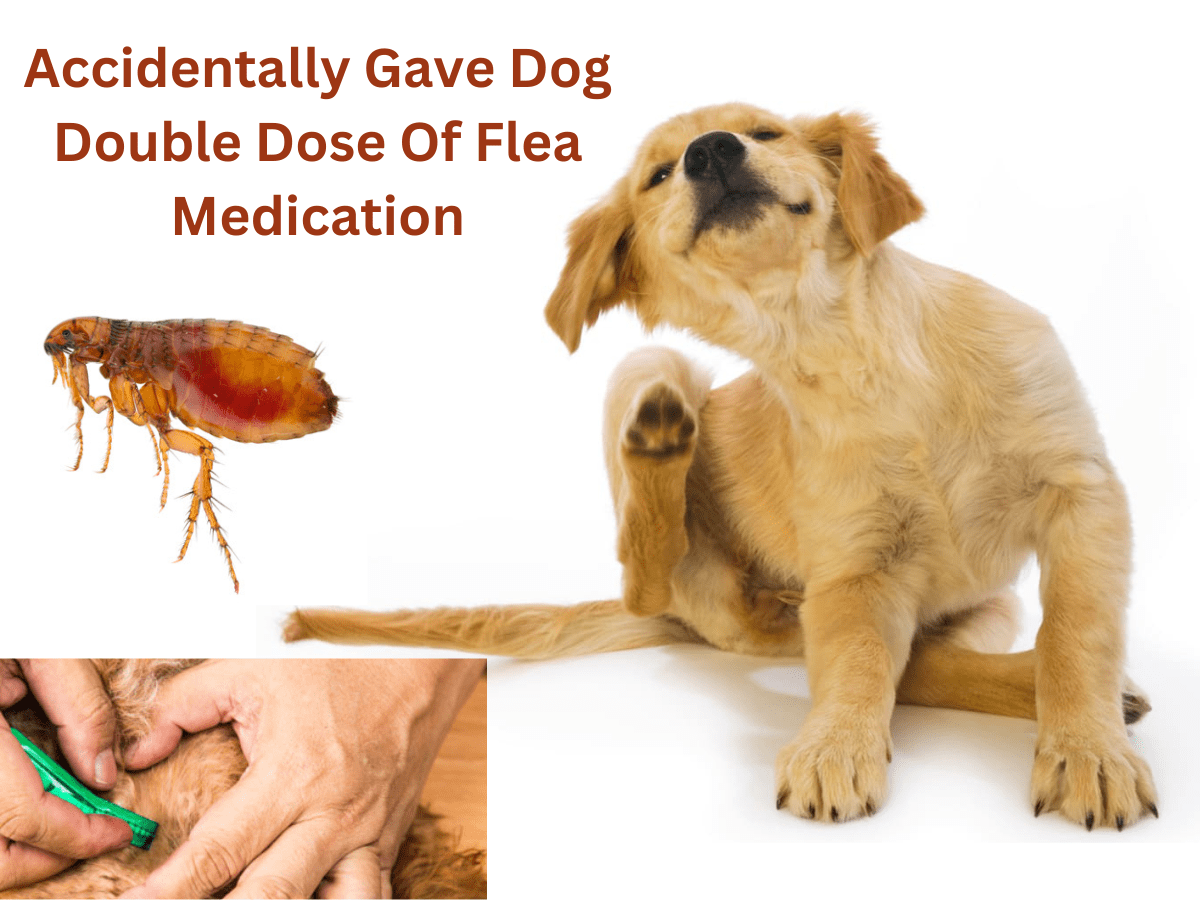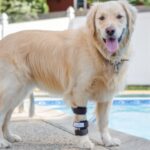Accidentally gave dog double dose of flea medication, Have you ever done this? If so, you’re not alone. Many pet owners have made this mistake at some point, and it can be very scary and stressful. Flea medications are powerful products that can protect your dog from fleas and ticks, but they can also cause serious harm if overdosed.
In this blog post, we will tell you everything you need to know about flea medication overdose in dogs, including the signs and symptoms, how to respond, how to prevent it, and some online accounts of accidental overdosing.
Our goal is to educate and reassure you about what to do if you ever find yourself in this situation “What happens if I give my dog too much Frontline? By the end of this blog post, you will have a better understanding of the dangers of flea medication overdose and how to avoid it in the future.
Contents
- 1 Signs and Symptoms of Flea Medication Overdose in Dogs
- 2 How to Respond to a Flea Treatment Overdose in Dogs
- 3 How to Prevent Flea Medication Double Dose in Dogs
- 4 Online Accounts of Accidental Overdosing
- 5 How to Prevent Your Dog from Getting Fleas
- 6 How to Prevent Fleas in Your Home
- 7 Conclusion
- 8 FAQs About Accidentally Gave Dog Double Dose Of Flea Medication
Signs and Symptoms of Flea Medication Overdose in Dogs
Flea medications work by interfering with the nervous system of fleas and ticks, causing them to die or detach from your dog. However, if your dog receives too much flea medication, either by accident or by design, the same effect can happen to your dog’s nervous system.
This can result in a range of signs and symptoms of a flea medication overdose, depending on the type and amount of medication, the size and health of your dog, and the time elapsed since the overdose.
Some of the common signs and symptoms of flea medication overdose in dogs include:
- Vomiting and diarrhea
- Excessive salivation or drooling
- Muscle tremors or twitching
- Seizures or convulsions
- Difficulty breathing or panting
- Lethargy or weakness
- Loss of appetite or thirst
- Increased or decreased heart rate
- Dilated or constricted pupils
- Incoordination or stumbling
- Agitation or anxiety
- Depression or coma
These signs and symptoms can vary in severity and duration, and some may not appear until hours or days after the overdose. Therefore, it is important to monitor your dog closely for any signs of adverse reactions and contact your vet immediately if you notice any of them. Your vet will be able to diagnose the overdose and provide the appropriate treatment.
How to Respond to a Flea Treatment Overdose in Dogs
If you suspect that you have given your dog too much flea medicine, don’t panic. There are some steps you can take to respond to a flea treatment overdose and minimize the potential harm to your dog. Here are some things you should do as soon as possible:
- Read the label and instructions on the flea medication package and follow any advice given. Some products may have specific antidotes or instructions for overdose cases. For example, some products may advise you to induce vomiting or give activated charcoal to your dog.
- Call your vet and explain the situation. Tell them the type and amount of Frontline you gave your dog, the time of the overdose, and any signs and symptoms your dog is showing. Your vet will be able to assess the severity of the overdose and advise you on the best course of action. They may ask you to bring your dog to the clinic for further evaluation and treatment, or they may instruct you to monitor your dog at home.
- Remove any residual product from your dog’s skin using mild soap and water. This can help prevent further absorption of the medication through the skin. Be careful not to irritate your dog’s skin or eyes while washing them.
- Keep your dog comfortable and hydrated and watch for any changes in their condition. Provide your dog with fresh water and a quiet place to rest. Avoid giving your dog any food or other medications unless instructed by your vet. Check your dog’s vital signs, such as breathing, heart rate, and temperature, and report any abnormalities to your vet. If your dog shows any signs of distress, such as difficulty breathing, seizures, or loss of consciousness, seek emergency veterinary care immediately.
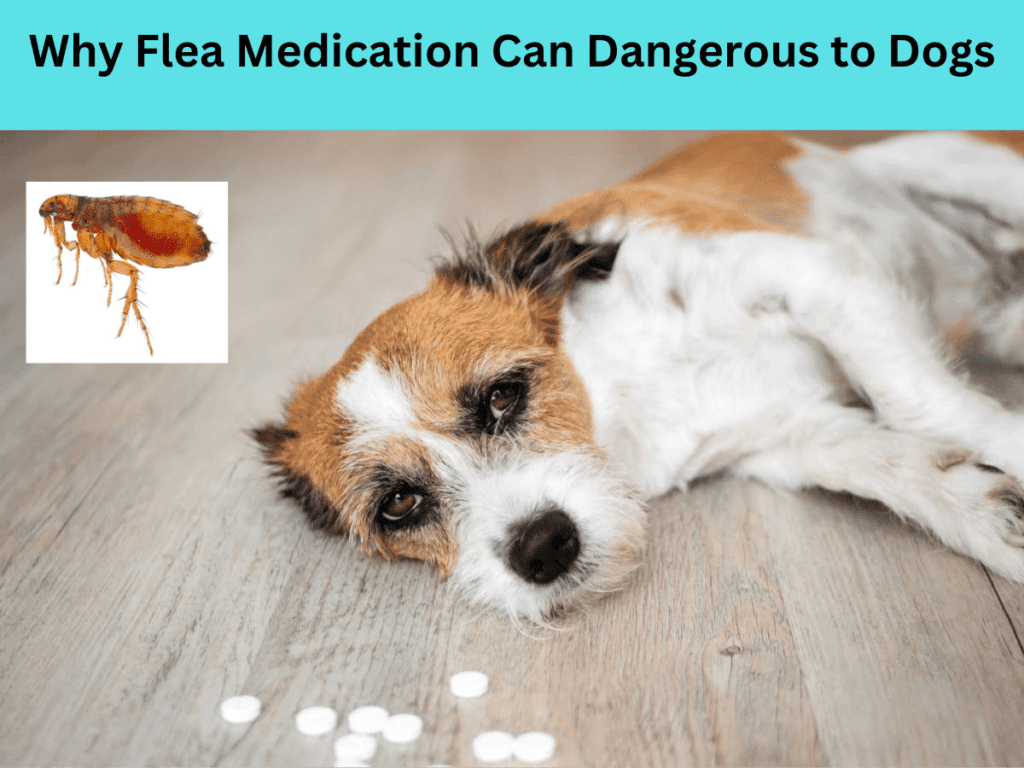
The vet may follow tests and treatments to overdose dog
Depending on the type and severity of the overdose, your vet may administer some treatments to help your dog recover. Some of the possible treatments include:
- Liquid therapy: This involves giving your dog fluids intravenously or subcutaneously to help flush out the medication and prevent dehydration and kidney damage.
- Dialysis: This is a procedure that filters the blood and removes toxins and waste products from the body. It may be used in severe cases of overdose where the medication has affected the kidneys or other organs.
- Antihistamines: These are drugs that block the effects of histamine, a chemical that causes allergic reactions. They may be used to treat skin irritation, itching, or swelling caused by the flea medication.
- Anti-seizure medications: These are drugs that control or prevent seizures, which are abnormal electrical activity in the brain. They may be used to treat muscle tremors, twitching, or convulsions caused by the flea medication.
Most dogs recover well from accidentally giving the dog a double dose of frontline, especially if treated promptly and appropriately. However, some dogs may experience long-term effects, such as nerve damage, organ failure, or behavioral changes. Therefore, it is important to follow up with your vet and monitor your dog’s health and well-being after the overdose.
Learn More About Your Dog Health-Related Issues
My Dog Needs Stitches But I Can’t Afford It
How to Prevent Flea Medication Double Dose in Dogs
The best way to avoid the dangers of flea medication overdose is to prevent it from happening in the first place. Here are some tips and best practices on how to prevent flea medication overdose in your dog:
- Read and follow the instructions carefully and measure the dosage accurately according to your dog’s weight. Different products may have different dosing guidelines, so don’t assume that one size fits all. Use a measuring device, such as a syringe or a dropper, to ensure you give the correct amount of medication to your dog.
- Keep a medication schedule or calendar to keep track of when you give your dog its flea meds and avoid double dosing. You can use a physical or digital calendar, a reminder app, or a sticker on the product package to mark the date of the last application. This way, you won’t forget or be confused when you give your dog its flea medication.
- Store the medications properly and out of reach of children and pets. Flea medications can be tempting for curious dogs, especially if they are flavored or chewable. Keep them in a secure and locked place, such as a cabinet or a drawer, and don’t leave them lying around. Also, make sure to dispose of any empty or expired packages safely and responsibly.
- Choose the right type and brand of flea medication for your dog and consult your vet before switching or combining products. Not all flea medications are suitable for all dogs, and some may have contraindications or interactions with other medications or health conditions. Your vet can help you select the best product for your dog based on its age, size, breed, and medical history. Also, don’t mix or alternate different products without your vet’s approval, as this may increase the risk of overdose or side effects.
- Consider alternative or natural methods of flea prevention, such as flea combs, essential oils, or diatomaceous earth. These methods may not be as effective or convenient as conventional flea medications, but they may be safer and gentler for your dog and the environment. However, you should still do your research and consult your vet before using any of these methods, as some of them may have drawbacks or limitations. For instance, some essential oils may be toxic or irritating to dogs, and diatomaceous earth may cause respiratory problems if inhaled.
- By following these tips, you can reduce the chances of accidentally giving your dog a double dose of flea medication and protect your dog from fleas and ticks without harming its health.
Online Accounts of Accidental Overdosing
You may feel alone or ashamed if you have accidentally overdosed your dog on flea medication, but you are not the only one who has made this mistake. Many pet owners have shared their stories online about how they dealt with this situation and how their dogs recovered.
Reading these online accounts of accidental overdosing can help you learn from their experiences and find some comfort and support.
Here are some online accounts of pet owners who have accidentally overdosed their dogs on flea medication and how they coped with it:
- “I accidentally gave my dog a double dose of Nexgard last night. I freaked out and called the vet, who told me to watch him for any signs of overdose. He was fine, just a bit sleepy and thirsty. I felt so bad, but I learned my lesson and will be more careful next time.” – PetCoac
- ack of Frontline. I rushed him to the vet, who gave him some fluids and was active. rated charcoal. He was vomiting and shaking for a while, but he recovered after a few hours. It was scary, but I’m glad he’s okay. I now keep all my medications locked up and out of his reach.
- I gave my dog the wrong flea medication. I thought it was the same as the one I used before, but it was actually for cats. He started having seizures and I took him to the emergency vet. They gave him some anti-seizure meds and kept him overnight. He’s back home now and doing well. I’m so relieved and grateful. I’ll never make that mistake again.” –
These online accounts illustrate the main points of the blog post and provide some social proof and emotional support to the reader. They show that flea medication overdose can happen to anyone, but it can be treated and prevented with proper care and attention.
They also show that most dogs survive and recover from flea medication overdose and that you are not alone in this situation.
How to Prevent Your Dog from Getting Fleas
Fleas are annoying and harmful parasites that can infest your dog and cause itching, irritation, allergies, and diseases. Fleas can also spread to your home and other pets, making them hard to remove. Therefore, it is better to prevent fleas from attacking your dog in the first place. In this blog post, we will share some tips and methods on how to prevent your dog from getting fleas and keep them flea-free.
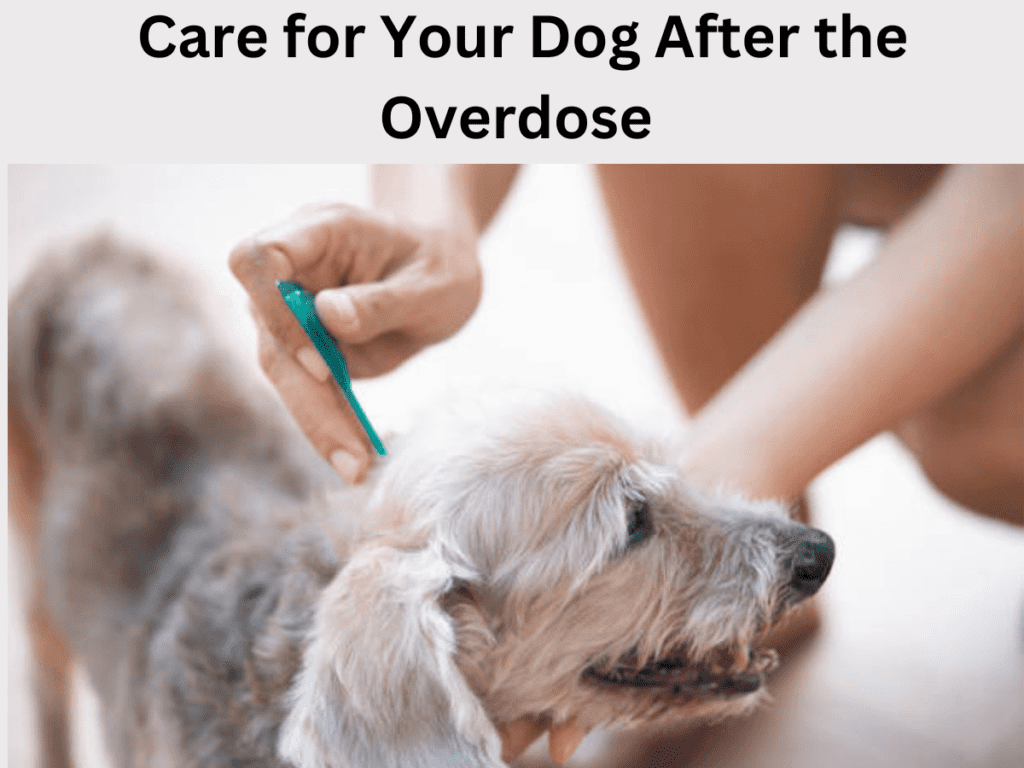
What are Fleas and Why Are They Bad for Your Dog?
Fleas are small, wingless insects that feed on the blood of animals and humans. They have strong legs that allow them to jump from one host to another. They can also survive for months without feeding, making them resilient and persistent.
Fleas can cause a lot of problems for your dog, such as:
- Flea allergy dermatitis: This is a skin condition that occurs when your dog is allergic to flea saliva. It causes intense itching, redness, inflammation, and hair loss. It can also lead to secondary infections and skin damage.
- Tapeworms: These are intestinal parasites that can be transmitted by fleas. They can cause weight loss, diarrhea, vomiting, and anal irritation in your dog. They can also infect humans, especially children.
- Anemia: This is a condition that occurs when your dog loses too much blood due to flea bites. It can cause weakness, lethargy, pale gums, and organ failure. It can be life-threatening, especially for young, old, or sick dogs.
- Flea-borne diseases: These are diseases that can be transmitted by fleas, such as plague, typhus, cat scratch disease, and bartonellosis. They can cause fever, swollen lymph nodes, skin lesions, and organ damage in your dog. They can also affect humans and other animals.
How to Prevent Fleas on Your Dog
There are many ways to prevent fleas on your dog, from conventional to natural methods. Here are some of the most effective and popular ones:
- Flea preventatives: These are products that kill or repel fleas on your dog. They come in various forms, such as topical solutions, oral tablets, collars, sprays, shampoos, and powders. They can be obtained from your vet or over-the-counter. They are usually applied or given monthly or as needed. They are generally safe and effective, but you should always read the label and follow the instructions carefully. You should also consult your vet before using any flea preventative, especially if your dog has any health conditions, is pregnant, or is nursing. Some of the common flea preventatives are:
- Frontline Plus: This is a topical solution that kills adult fleas, flea eggs, flea larvae, and ticks. It also prevents flea infestations for up to 30 days. It is waterproof and easy to apply. It is suitable for dogs 8 weeks and older.
- Nexgard: This is an oral tablet that kills adult fleas and ticks. It also prevents flea infestations for up to 30 days. It is chewable and tasty. It is suitable for dogs 8 weeks and older and 4 pounds and heavier.
- Seresto: This is a collar that kills and repels fleas and ticks. It also prevents flea infestations for up to 8 months. It is odorless and non-greasy. It is suitable for dogs 7 weeks and older.
- Flea combing: This is a simple and inexpensive method that involves using a fine-toothed comb to remove fleas and flea dirt from your dog’s coat. It is effective and safe, but it requires patience and diligence. You should comb your dog daily or as often as possible, especially after spending time outdoors. You should also dip the comb in soapy water or alcohol to kill the fleas and dispose of them properly. You should also check your dog’s ears, eyes, nose, mouth, and anus for fleas and remove them carefully.
- Flea bathing: This is a method that involves washing your dog with a flea shampoo or a mild soap and water to kill and remove fleas. It is effective and safe, but it can be drying and irritating to your dog’s skin. You should bathe your dog once a week or as needed, depending on the severity of the infestation. You should also rinse your dog thoroughly and dry them well. You should also avoid getting the shampoo or soap in your dog’s eyes, ears, nose, mouth, and anus.
Suggested: My Dog Jumped After Being Spayed
Cat Losing Hair In The Corner Of Its Eye
Cat Leaving Blood Spots On Bed
Natural and Homemade Methods to Kill Flea in Dogs
Flea home remedies: These are natural or homemade methods that use ingredients that are believed to repel or kill fleas. They can be cheap and easy to make, but they may not be as effective or safe as conventional methods. You should always do your research and consult your vet before using any flea home remedies, as some of them may be toxic or harmful to your dog. Some of the common flea home remedies are:
- Apple cider vinegar: This is a natural acid that can make your dog’s skin bloodless appealing to fleas. You can add a teaspoon of apple cider vinegar to your dog’s water bowl or spray it on your dog’s coat. However, you should avoid using it on open wounds or irritated skin, as it can cause stinging and burning.
- Essential oils: These are natural oils that can repel fleas with their strong scent. You can add a few drops of essential oils, such as lavender, peppermint, or eucalyptus, to a carrier oil, such as olive or coconut oil, and apply it to your dog’s coat. However, you should avoid using it on your dog’s face, ears, eyes, nose, mouth, and anus, as it can cause irritation and toxicity. You should also avoid using it on cats, as they are more sensitive to essential oils.
- Diatomaceous earth: This is a natural powder that can kill fleas by dehydrating them and damaging their exoskeleton. You can sprinkle diatomaceous earth on your dog’s coat, bedding, and furniture. However, you should use food-grade diatomaceous earth, as industrial-grade diatomaceous earth can be harmful to your dog. You should also wear a mask and gloves when handling diatomaceous earth, as it can cause respiratory and skin problems if inhaled or touched.
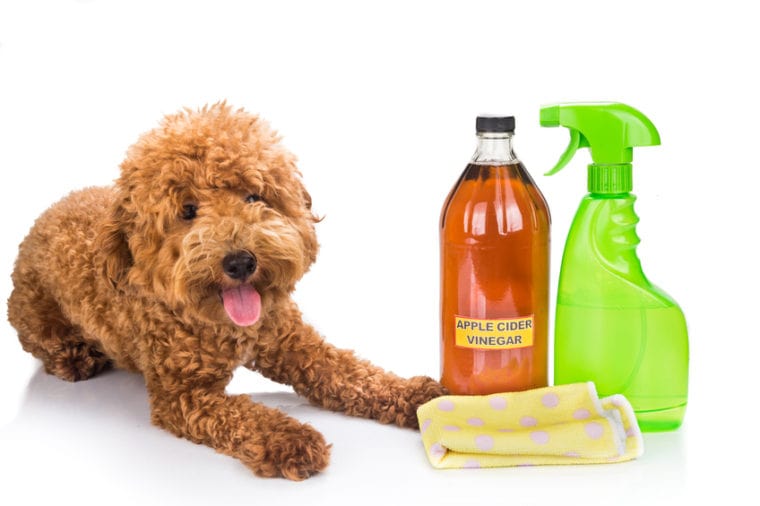
How to Prevent Fleas in Your Home
Preventing fleas on your dog is not enough. You also need to prevent fleas in your home, as they can hide and breed in your carpets, furniture, bedding, and other places. Here are some tips on how to prevent fleas in your home:
- Vacuum regularly and thoroughly. This can remove fleas, flea eggs, flea larvae, and flea dirt from your floors, carpets, rugs, and furniture. You should vacuum at least once a week or more often if you have a flea infestation. You should also dispose of the vacuum bag or empty the vacuum canister outside and seal it in a plastic bag.
- Wash and dry your bedding and your dog’s bedding. This can kill and remove fleas, flea eggs, flea larvae, and flea dirt from your sheets, blankets, pillows, and your dog’s bed, crate, and toys. You should wash and dry them in hot water and high heat at least once a week or more often if you have a flea infestation. You should also replace or discard any bedding that is heavily infested or damaged.
- Use flea traps and sprays. These are products that can attract and kill fleas in your home. They come in various forms, such as sticky pads, light bulbs, or aerosols. You can place them in areas where fleas are likely to congregate, such as under furniture, near windows, or in dark corners. You should follow the instructions on the product label and use them with caution, as some of them may be toxic or flammable.
- Hire a professional pest control service. This is a method that involves hiring a licensed and experienced pest control company to treat your home for fleas. They can use various techniques and products, such as fogging, spraying, or bombing, to eliminate fleas and their eggs, larvae, and pupae. They can also provide you with advice and recommendations on how to prevent future infestations. This method can be costly and inconvenient, but it can be effective and thorough.
Conclusion
In this blog post, we have learned about the dangers of accidentally gave dog double dose of flea medication and how to deal with it. We have covered the signs and symptoms, how to respond, how to prevent, and some online accounts of accidental overdosing. We hope that this information has helped you to understand and avoid this common mistake and to keep your dog healthy and happy.
If you have ever accidentally given your dog too much flea medicine, don’t feel bad. You are not the only one who has done it, and most dogs recover well from it. The important thing is to act quickly and follow the instructions on the product label and your vet’s advice. You can also use some of the tips and best practices we have shared to prevent flea treatment overdose in the future.
Have you ever experienced a flea medication overdose in your dog? How did you handle it? Do you have any questions or tips to share? Let us know in the comments below. And don’t forget to share this blog post with your fellow dog owners and subscribe to our blog for more helpful and informative articles. Thank you for reading!
FAQs About Accidentally Gave Dog Double Dose Of Flea Medication
Q: What are the signs and symptoms of flea medication overdose in dogs?
- A: Some of the common signs and symptoms of flea medication overdose include vomiting, diarrhea, drooling, tremors, seizures, breathing difficulties, lethargy, appetite loss, heart rate changes, pupil changes, incoordination, agitation, depression, or coma. These signs and symptoms can vary in severity and duration, and some may not appear until hours or days after the overdose.
Q: What should I do if I accidentally give my dog a double dose of flea medication?
- A: If you accidentally gave your dog a double dose of flea medication, you should contact your vet immediately and follow their advice. You should also read the label and instructions on the flea medication package and follow any guidance given. You should remove any residual product from your dog’s skin using mild soap and water. You should keep your dog comfortable and hydrated and watch for any changes in their condition. If your dog shows any signs of distress, such as difficulty breathing, seizures, or loss of consciousness, seek emergency veterinary care right away.
Q: How can I prevent flea medication overdose in my dog?
- A: To prevent flea medication overdose in your dog, you should read and follow the instructions carefully and measure the dosage accurately according to your dog’s weight. You should keep a medication schedule or calendar to keep track of when you give your dog its flea meds and avoid double dosing. You should store the medications properly and out of reach of children and pets. You should choose the right type and brand of flea medication for your dog and consult your vet before switching or combining products. You should also consider alternative or natural methods of flea prevention, such as flea combs, essential oils, or diatomaceous earth.
Q: How can I treat flea infestation in my dog without using flea medication?
- A: If you want to treat flea infestation in your dog without using flea medication, you should use a flea comb to remove fleas and flea dirt from your dog’s coat. You should also wash and dry your dog and its bedding in hot water and high heat to kill and remove fleas and their eggs. You should also vacuum your home regularly and thoroughly to remove fleas and their eggs from your carpets, furniture, and other places. You should also use flea traps and sprays to attract and kill fleas in your home. You should also hire a professional pest control service to treat your home for fleas if the infestation is severe.
Q: Are there any long-term effects of flea medication overdose in dogs?
- A: Most dogs recover well from flea medication overdose, especially if treated promptly and appropriately. However, some dogs may experience long-term effects, such as nerve damage, organ failure, or behavioral changes. Therefore, it is important to follow up with your vet and monitor your dog’s health and well-being after the overdose.

